Advertisements
Advertisements
Question
Given the resistances of 1 Ω, 2 Ω, 3 Ω, how will be combine them to get an equivalent resistance of (11/5) Ω?
Solution
Equivalent resistance, R' = `11/5` Ω
Consider the following combination of the resistors.

Equivalent resistance of the circuit is given by,
R' = `(2 xx 3)/(2 + 3) + 1`
= `6/5 + 1`
= `11/5` Ω
RELATED QUESTIONS
Use Kirchhoff's rules to obtain conditions for the balance condition in a Wheatstone bridge.
Determine the equivalent resistance of networks shown in Fig.

Find the equivalent resistances of the networks shown in the figure between the points a and b.
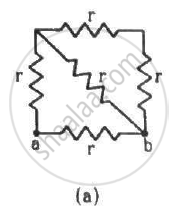
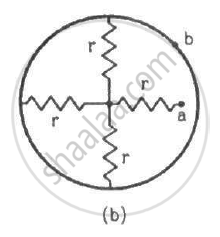
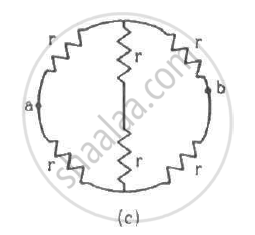
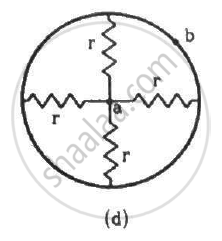
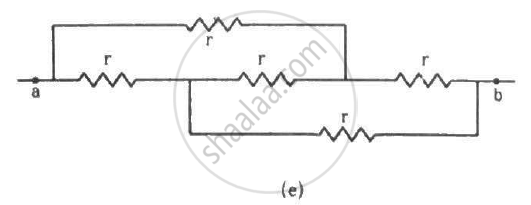
Consider the potentiometer circuit as arranged in the figure. The potentiometer wire is 600 cm long. (a) At what distance from the point A should the jockey touch the wire to get zero deflection in the galvanometer? (b) If the jockey touches the wire at a distance of 560 cm from A, what will be the current in the galvanometer?
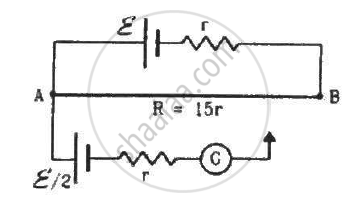
On which conservation principle is Kirchoff's Second Law of electrical networks based?
How the emf of two cells are compared using potentiometer?
While measuring the length of the rod by vernier callipers, the reading on the main scale is 6.4 cm and the eight divisions on vernier is in line with marking on the main scale division. If the least count of callipers is 0.01 and zero error - 0.04 cm, the length of the rod is ______.
Two cell of 1.25 V and 0.75 V are connected parallel. The effective voltage will be:-
Power P is to be delivered to a device via transmission cables having resistance RC. If V is the voltage across R and I the current through it, find the power wasted and how can it be reduced.
Derive the equation of the balanced state in a Wheatstone bridge using Kirchhoff’s laws.
